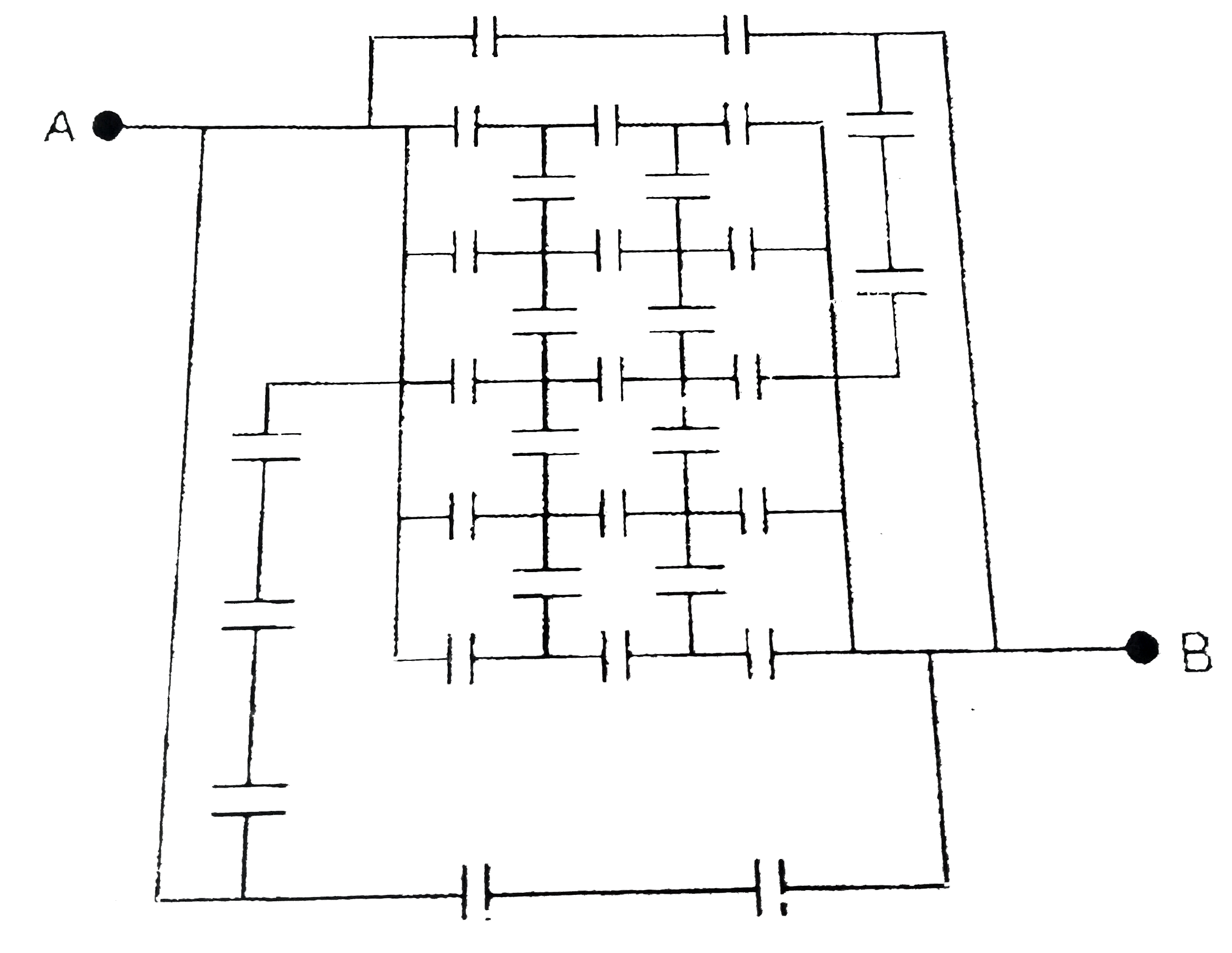The capacitance of a capacitor depends on
Charge
Voltage
Only on geometrical dimensions and material in space between plates of the capacitor
None of these
The correct Answer is:3
To determine the factors on which the capacitance of a capacitor depends, we can analyze the relationship between charge, voltage, and the physical characteristics of the capacitor.
1. Understanding Capacitance:
- Capacitance (C) is defined as the ratio of the charge (Q) stored on one plate of the capacitor to the voltage (V) across the plates. Mathematically, it is expressed as:
C=QV
- This equation shows that capacitance is a measure of how much charge a capacitor can store per unit voltage.
2. Identifying Constants:
- In the equation C=QV, both charge (Q) and voltage (V) can vary, but capacitance (C) is a constant for a given capacitor under specific conditions. Thus, capacitance does not depend on the charge or voltage directly.
3. Factors Affecting Capacitance:
- The capacitance of a capacitor is influenced by its physical characteristics:
- Area of the Plates (A): The larger the area of the plates, the greater the capacitance. This is because a larger area allows more charge to be stored.
- Distance Between the Plates (d): The capacitance decreases as the distance between the plates increases. This is because a larger distance reduces the electric field strength.
- Dielectric Material: The presence of a dielectric material between the plates affects capacitance. The dielectric constant (ε) of the material increases the capacitance compared to a vacuum.
4. Capacitance Formula:
- The capacitance can be expressed with the formula:
C=εAd
- Here, ε is the permittivity of the dielectric material (which includes the permittivity of free space, ε0, and the dielectric constant of the material).
5. Conclusion:
- From the analysis, we conclude that the capacitance of a capacitor depends on:
- The area of the plates (A)
- The distance between the plates (d)
- The dielectric material between the plates (ε)
Final Answer:
The capacitance of a capacitor depends on the geometrical dimensions (area and distance between plates) and the dielectric material between the plates.
- Capacitance (C) is defined as the ratio of the charge (Q) stored on one plate of the capacitor to the voltage (V) across the plates. Mathematically, it is expressed as:
C=QV
- This equation shows that capacitance is a measure of how much charge a capacitor can store per unit voltage.
- In the equation C=QV, both charge (Q) and voltage (V) can vary, but capacitance (C) is a constant for a given capacitor under specific conditions. Thus, capacitance does not depend on the charge or voltage directly.
- The capacitance of a capacitor is influenced by its physical characteristics:
- Area of the Plates (A): The larger the area of the plates, the greater the capacitance. This is because a larger area allows more charge to be stored.
- Distance Between the Plates (d): The capacitance decreases as the distance between the plates increases. This is because a larger distance reduces the electric field strength.
- Dielectric Material: The presence of a dielectric material between the plates affects capacitance. The dielectric constant (ε) of the material increases the capacitance compared to a vacuum.
- The capacitance can be expressed with the formula:
C=εAd
- Here, ε is the permittivity of the dielectric material (which includes the permittivity of free space, ε0, and the dielectric constant of the material).
- From the analysis, we conclude that the capacitance of a capacitor depends on:
- The area of the plates (A)
- The distance between the plates (d)
- The dielectric material between the plates (ε)
The capacitance of a capacitor depends on the geometrical dimensions (area and distance between plates) and the dielectric material between the plates.
Topper's Solved these Questions
- ELECTROSTATIC POTENTIAL AND CAPACITANCE BOOK - AAKASH INSTITUTE ENGLISHCHAPTER - ELECTROSTATIC POTENTIAL AND CAPACITANCE EXERCISE - SECTION-B (OBJECTIVE TYPE QUESTIONS (ONLY ONE ANSWER) )
1 Videos
- ELECTROSTATIC POTENTIAL AND CAPACITANCE BOOK - AAKASH INSTITUTE ENGLISHCHAPTER - ELECTROSTATIC POTENTIAL AND CAPACITANCE EXERCISE - SECTION-B(OBJECTIVE TYPE QUESTIONS(ONLY ONE ANSWER) )
29 Videos
- ELECTROSTATIC POTENTIAL AND CAPACITANCE BOOK - AAKASH INSTITUTE ENGLISHCHAPTER - ELECTROSTATIC POTENTIAL AND CAPACITANCE EXERCISE - ASSIGNMENT SECTION - D
9 Videos
- ELECTROMAGNETIC WAVESBOOK - AAKASH INSTITUTE ENGLISHCHAPTER - ELECTROMAGNETIC WAVESEXERCISE - ASSIGNMENT SECTION - D Assertion-Reason Type Questions
25 Videos
- GRAVITATION BOOK - AAKASH INSTITUTE ENGLISHCHAPTER - GRAVITATION EXERCISE - ASSIGNMENT SECTION - D (ASSERTION-REASON TYPE QUESTIONS)
15 Videos
Similar Questions
Knowledge Check
If the capacitance of each capacitor is C, then effective capacitance of the shown network across any two junction is
 A2CBCCC2D5C
A2CBCCC2D5C
STATEMENT-1: The capacitance of the capacitor remains constant irrespective of the charge present on it. because
STATEMENT-2: Capacitance depends on the size and the shape of the capacitor and also on the surrounding medium.
View SolutionThe capacitance of each capacitor as shown in the circuit is C. The effective capacitance of the circuit between terminals A and B is
View Solution
32 capacitor are connected in a circuit as shown in the figure. The capacitance of each capacitor is 3μF. Find equivalent capacitance across AB in μF.
View SolutionAssertion : If the distance between parallel plates of a capacitor is halved and dielectric constant is made three times, then the capacitance becomes 6 times.
Reason : Capacity of the capacitor depends upon the nature of the material between the plates.
View SolutionIf the capacitance of each capacitor is C, then effective capacitance of the shown network across any two junction is

View SolutionIn the figure below, the capacitance of each capacitor is 3μF. The effective capacitance between points A and B is

View SolutionThe capacitance of a charged capacitor is C and the energy stored in it is U. What is the value of charge on the capacitor?
View Solution
